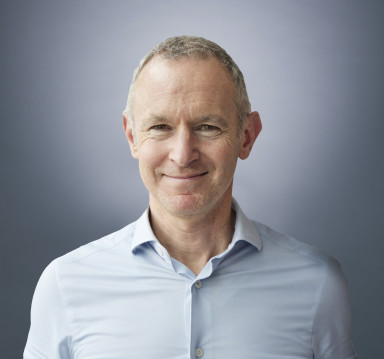When President Trump hiked trade tariffs, he pushed up expectations for both US inflation and unemployment.
This makes the US Federal Reserve’s (Fed) job more difficult – they must balance these two economic measures when setting interest rates.
However, the recent volatility in oil prices adds a further layer of complexity.
Last week, the US and UK central banks kept rates on hold, while there were rate cuts in the euro area, Switzerland, Sweden, Norway and India.
So, what could be next for global interest rates amidst all the economic and market uncertainty.
The US picture
Should the US Federal Reserve be cutting rates?
President Trump thinks that should have already happened, labelling its Chair ‘too late’ Jerome Powell.
Fed Governor Christopher Waller believes the central bank is in a position to cut as early as next month. (It might not be a coincidence that he’s seen as a contender when Trump looks to replace Powell in 2026.)
But the market is pricing in September for the next cut, with three more predicted over the next year.
US rate forecasts have swung wildly over the last year. Back in September 2024, six cuts were expected this year. By February, robust economic growth and above-target inflation meant only one cut was priced in.
The Fed has a dual mandate – to achieve both stable prices and maximum sustainable employment.
The imposition of tariffs means the Fed must decide which matters most, the likely rise in inflation or the forecast hit to employment.
With inflation still above target and growth robust for now, most forecasters think the Fed will watch and wait until their September meeting.
The spike in oil prices since the US, Israel and Iran have traded military strikes adds another layer of uncertainty for policy makers. We expect the effects to be short lived, but major disruptions to global oil flows could change the picture.
What about the rest of the world?
Meanwhile, in Switzerland last week, we saw a return to the era of zero interest rates. Inflation fell to -0.1% in May, the first negative reading in four years.
The European Central Bank has cut rates eight times since May 2024. May’s inflation rate came in below the 2% target, at 1.9%. With economic growth expected to remain weak, the market sees room for one more quarter-point cut between now and next spring.
The UK is in a slightly worse position, with similarly weak economic growth but stickier inflation. The market sees rates falling from 4.25% today to 3.5% by this time next year.
The picture is very different in Japan, where inflation rose to 3.5% in May, exceeding expectations. With interest rates down at 0.5%, we see room for them to rise over the year ahead.
China is experiencing mild deflation. We expect this will keep policy rates low for the foreseeable future. Still, the currency saw modest gains against the dollar over the last two months – something to watch.
The emerging economies in the G20, outside China, fall into three camps.
In the first – in India, Indonesia, Saudi Arabia, South Africa and South Korea – inflation is back below 3%. That’s below the UK rate.
In the second, inflation in Brazil and Mexico is around 4-5%.
And in the third, inflation remains a major problem in Turkey (35%) and Argentina (44%), although the current rates are well below their 12-month highs (72% and 272% respectively).
Different cycles, different returns
The IMF has downgraded its forecast for global growth. We think this should see inflationary pressures ease – once the one-off impact of tariff hikes is behind us.
For now, the differing outlooks for inflation and interest rates provides potential for active investors to take views on rates, bonds and currencies.
This is the fishing ground of flexible strategic bond funds.
How to invest in this environment – a fund idea
Investing in this fund isn’t right for everyone. Investors should only invest if the fund’s objectives are aligned with their own, and there’s a specific need for the type of investment being made. Investors should understand the specific risks of a fund before they invest, and make sure any new investment forms part of a diversified portfolio.
For more details on the fund and its risks, use the links to its factsheets and key investor information.
Invesco Tactical Bond
This is one of our five funds to watch for 2025 and can invest in lots of different types of bonds from all over the world.
This means it can potentially take advantage of the different outlooks for inflation and interest rates in different regions.
The fund is co-managed by Stuart Edwards and Julien Eberhardt who have been part of the fixed income team at Invesco for well over a decade.
Over the long term the aim is to deliver a total return, through the combination of capital growth and income, rather than focusing purely on generating a high income.
The managers can invest in all types of bonds, with few constraints placed on them. This includes high yield bonds and derivatives, both of which can add risk if used.
The performance of the fund hinges on their ability to interpret the bigger economic picture, and they can alter the fund's investments based on what they see. They aim to shelter the fund when they see tough times ahead, and seek strong returns as more opportunities become available.
We think this is a good fund for exposure to the wider bond market. It takes away the hassle of deciding which type of bonds to invest in and when, because the managers are given the discretion to make these decisions for you.
May 2020 To May 2021 | May 2021 To May 2022 | May 2022 To May 2023 | May 2023 To May 2024 | May 2024 To May 2025 | |
|---|---|---|---|---|---|
Invesco Tactical Bond | 10.07% | -2.09% | -1.74% | 4.50% | 5.91% |
IA £ Strategic Bond | 7.39% | -6.14% | -4.02% | 7.43% | 6.65% |



